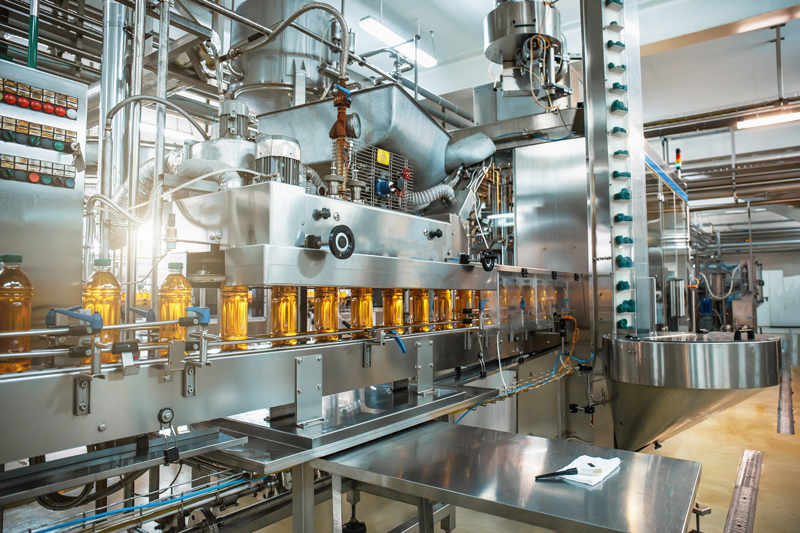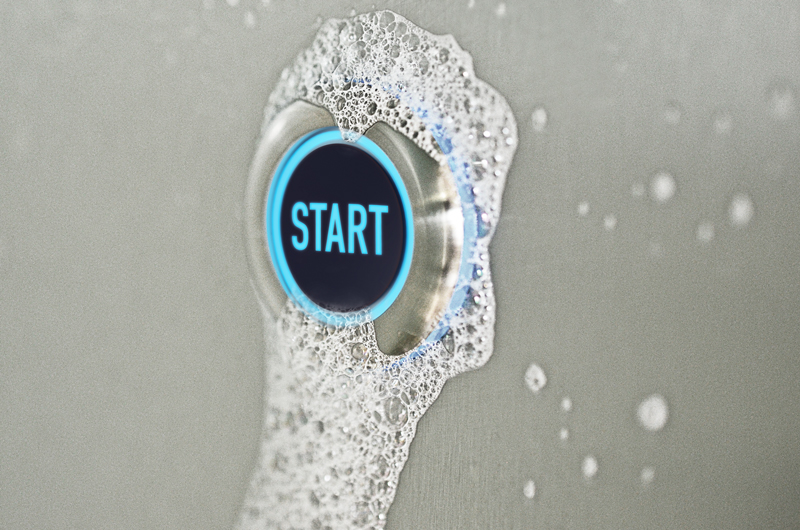- Home /
- Company /
- News & Events /
- Blog
July 20th, 2021 | 6 minutes read | CAPTRON editorial office
From abrasion to certification: Hygienic design made easy
When it comes to the production of foods, beverages and pharmaceutical products, consumer protection occupies center stage – rightfully so. The relevant guidelines are continuously being updated and tightened. Manufacturers face ever stricter framework conditions that they have to comply with throughout the entire supply chain and beyond.
But these are also becoming more and more complex in the Industry 4.0 context, including for machine and system setup in the production and packaging areas of manufacturing companies. Micro components such as switches and sensors are crucial elements for human-machine interaction.
As the central interface between human and machine, HMI components in the processing industry have to function properly under all operating conditions and ensure a germ-free environment. The exact regulations are defined by the American Food and Drug Administration (FDA) and the European Hygienic Engineering and Design Group (EHEDG).
Hygienic design requirements in the food and pharmaceutical industries
The regulations of the FDA and EHEDG describe the cleaning-friendly design of devices and production plants in the production of foods and pharmaceuticals. These regulations apply for open and closed production and plant areas that have to be cleaned either dry or wet. In its guide, the EHEDG describes the construction, design, and installation of HMI components so that food safety and quality can be ensured – for consumer protection.
Cleaning-friendly design of HMI components
Switches and sensors have to be made of materials that are protected against cracking, flaking, chipping, and abrasion – during use as well as cleaning and disinfection. Metals and plastics are especially suited to this task.
All parts that can be actuated manually must be equipped with covers or caps in a hygienic design. All surfaces of products in a hygienic design must be smooth, without micro-surface structures – only then do they meet the functional hygiene requirements of the EHEDG.
During production, the adhesives and sealants used also have to be non-toxic and cannot find their way into the product, meaning no part of the material, not even fine surface structures, may come loose or break away. Signal transmission fluids and thermal insulation materials are also subject to these requirements.
Functional hygiene requirements
The fundamental requirement the EHEDG places on food manufacturers is to prevent any and all food contamination. This includes toxins as well as dirt residues, viruses, foreign bodies, or chemical substances.
Accordingly, all parts used for production have to be easy to clean and disinfect. Producers have to prevent microorganisms from penetrating the surface structures and multiplying.
This applies especially to surfaces that are operated manually – because dirt, viruses, and bacteria are transferred easily at human-machine interfaces especially.
Only HMI components that meet these requirements are certified by the EHEDG. But when it comes to manually operated switches and sensors, many manufacturers still fail to meet hygienic design requirements.
Capacitive switches for hygienic safety
Until now, the food, beverages, and pharmaceutical industries have tended to use mechanical switches that are operated by actual contact. They are robust, but germs and food residues can easily accumulate on mechanical and moving elements. Plus, they cannot be installed joint-tight in plants – yet another gateway for contamination.
Capacitive switches present a robust, hygienic alternative to these standard solutions. They generate an electric field and continuously measure the capacity in their environment. When a hand comes near, the switch recognizes this change and responds, meaning it is no longer necessary to firmly press and activate a button. As the conductivity of the human body is quite high, wearing gloves does not present an issue. To prevent unintentional actuation, the electric field can also be realized and set for a sudden change to capacity. Only major changes, such as a fingerprint, will then evoke a response. Besides operation, capacitive switches offer additional advantages:
- Can be integrated into any plant joint-tight as a fully hygienic component
- No mechanical elements; neither dirt particles nor germs can accumulate
- More robust than mechanical buttons
- Ultra-flexible: Additional functions can be integrated via intelligent sensor systems or interfaces (APIs).
Innovation solutions on the path towards Industry 4.0
The capacitive switches in a hygienic design from CAPTROM meet these exact requirements. They are the first EHEDG-certified switches – and also satisfy the requirements of the FDA. This makes them pioneers in the industry and ideal for use in food and beverage production as well as in the pharmaceutical industry. Hygiene is the top priority of our solution.
The main characteristics at a glance:
- Made of high-quality stainless steel (1.4404) in a rounded design
- Special food-grade seal for watertightness: prevents cleaning agents, food waste, and viruses from seeping through and accumulating
- Especially long-lasting with over 100 million switching cycles
- Integrated sensors increase the range of possible functions significantly
- Freely programmable thanks to IO-Link compatibility – all settings can be changed later on and also during the process via IO-Link
- Can also be controlled without IO-Link via PNP, NPN, or push-pull solutions
- Uncomplicated use in numerous Industry 4.0 networked environments – for example as a NO or NC switch all the way to different lighting scenarios with RBG-LEDs
- Flexible interface for numerous HMI applications and support in the digital transformation of machine parks
- Suitable for smart factories with a greenfield approach as well as brownfield machine parks with a combination of intelligent systems and older models.
Certified hygienic design with capacitive switches
Capacitive sensor switches that can be actuated without applying manual pressure are the ideal solution for all-round hygienic production processes. At CAPTRON, our top priority is providing you with the solutions you need for this. This is why our CANEO series10 Hygienic from the CANEO range is tailored specifically to the high requirements of the food, beverages, and pharmaceutical industries. Their dependability is not least confirmed by their EHEDG certification. The CAPTRON CANEO series10 is the first switch to be awarded this certification, setting new standards in the industry.
You will find more on the CANEO series10 Hygienic in our product brochure or on our website.
The product brochure is available for download in the following languages:German | English | Polish.

 German
German English
English Chinese
Chinese Polish
Polish



